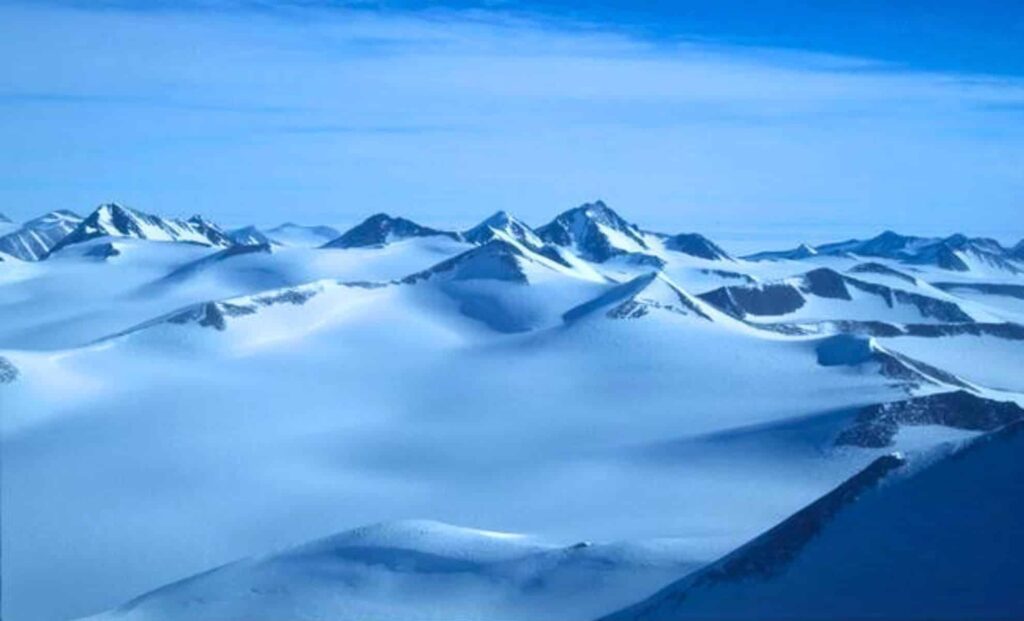Deep beneath Antarctica’s thick ice lies a hidden landscape that has long eluded scientific exploration. In a groundbreaking study, researchers have identified ancient mountain peaks buried under miles of ice in the Transantarctic Mountains, reshaping our understanding of the continent’s geological history. This discovery sheds light on the forces that have shaped the continent over millions of years, providing new clues about the evolution of Antarctica’s ice sheets.
Unveiling Antarctica’s Secret Mountain Range
The Transantarctic Mountains, a 3,500-kilometer-long range that divides East and West Antarctica, have been a subject of fascination for scientists for decades. Long known as the “great Antarctic horst,” this massive range contains peaks that soar more than 4,500 meters above the ice. But until now, much of the mountain range’s history remained a mystery.
Timothy Paulsen, a geologist at the University of Wisconsin-Oshkosh, led the study along with thermochronologist Jeff Benowitz from the University of Colorado Boulder. Their research, published in Earth and Planetary Science Letters, sought to uncover the secrets hidden beneath the thick ice sheets. “Early exploration of the Antarctic continent revealed a surprising result, a 3500 km long mountain range with peaks over 4500 m crossing the Antarctic continental interior,” said Paulsen.

A Complex Geologic Past
The bedrock that forms the foundation of the Transantarctic Mountains is far older than previously thought. It acts as a physical and geological divide between two very different parts of the continent—the stable East Antarctic craton and the active West Antarctic Rift System. For years, scientists have speculated about the region’s past, but new data suggests that the bedrock has undergone a far more dynamic history than anyone could have imagined.
The research team studied the mineral grains in igneous rocks from the area’s basement, analyzing how these rocks were affected by temperature and time over hundreds of millions of years. What they uncovered were multiple cycles of mountain-building, uplift, and erosion. These events, they concluded, were linked to shifts in Earth’s tectonic plates and major glaciations.
Mountains That Shaped Glacial Cycles
Paulsen and Benowitz’s findings suggest that the Transantarctic Mountains’ geological history is punctuated by significant mountain-building and erosion events. According to Paulsen, “Our new results suggest Transantarctic Mountain basement rocks experienced several punctuated mountain-building and erosion events, creating surfaces along which ancient rocks are missing.” These cycles of upheaval and erosion are intimately connected to major changes in the planet’s tectonic framework, marking key periods in Earth’s history.
Moreover, the data suggests that a large glacial period occurred roughly 300 million years ago. This glaciation likely influenced the development of the Antarctic ice sheets we see today, affecting the landscape and, in turn, shaping the cycles of ice flow that continue to this day.

